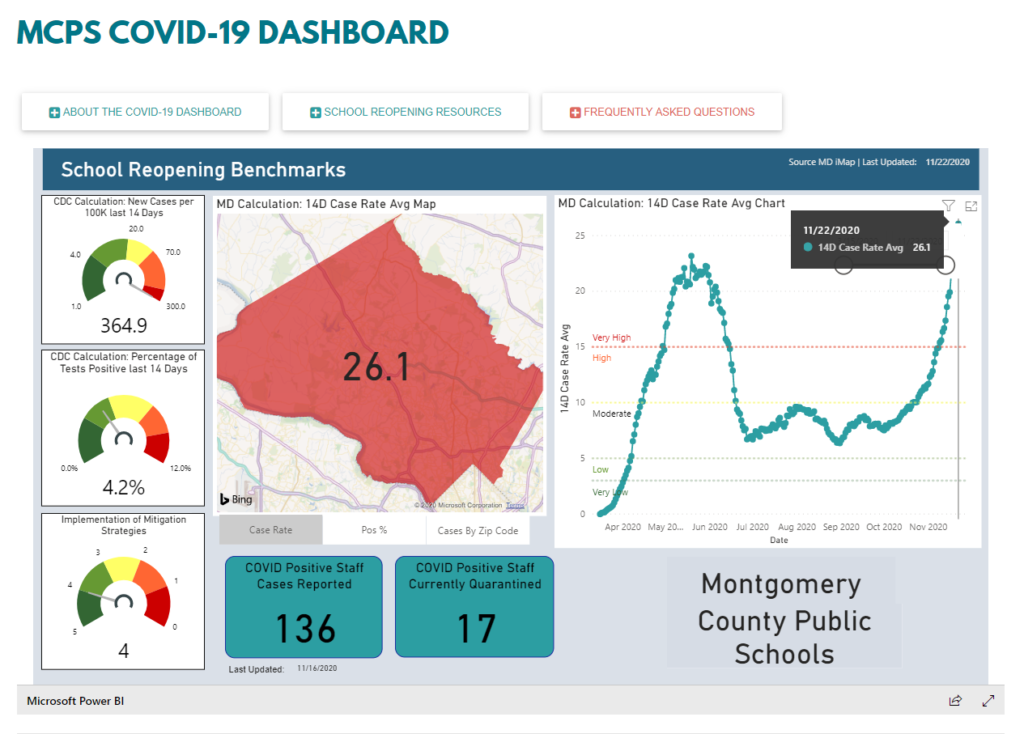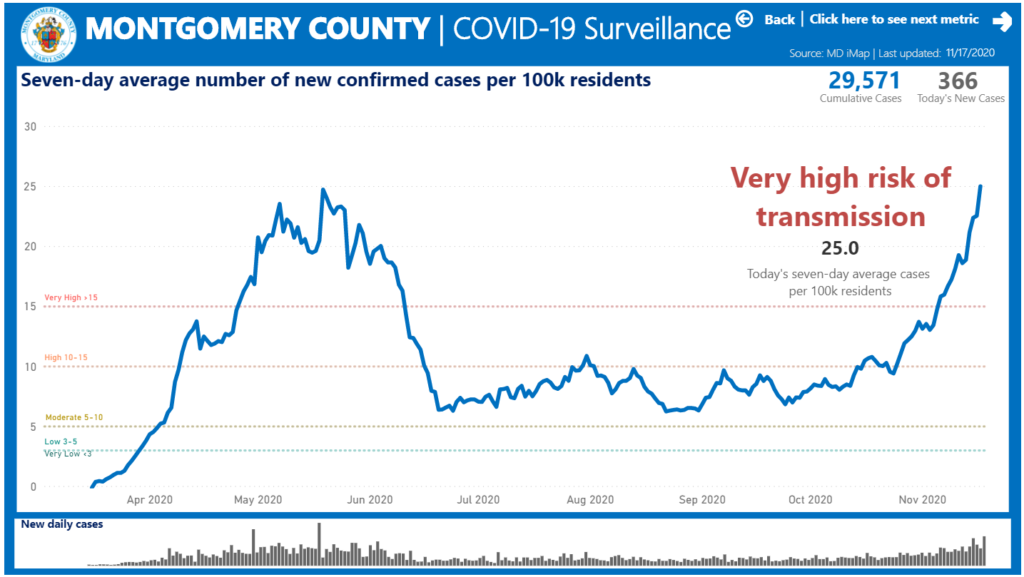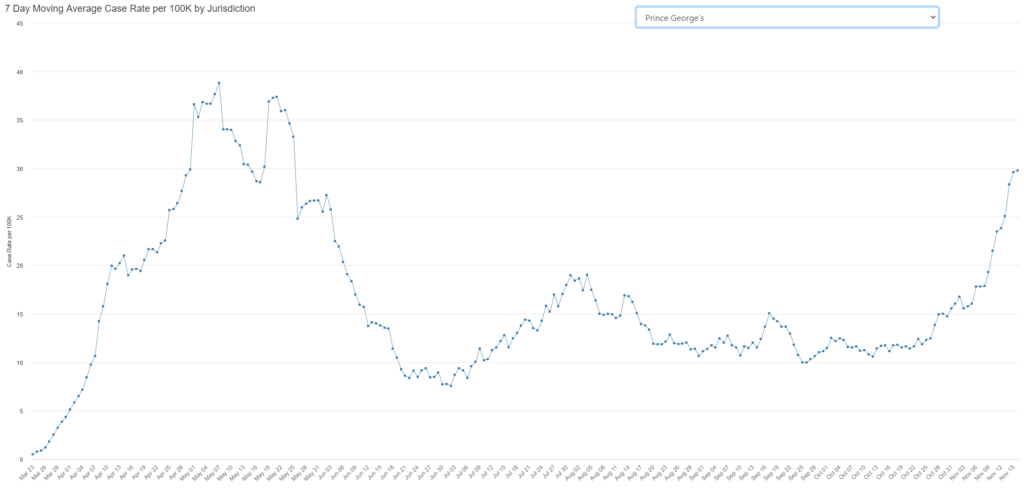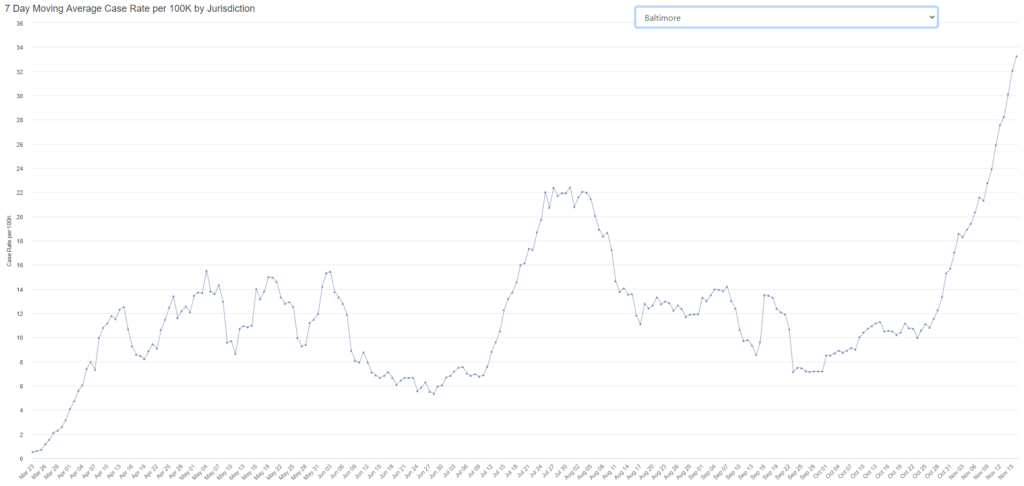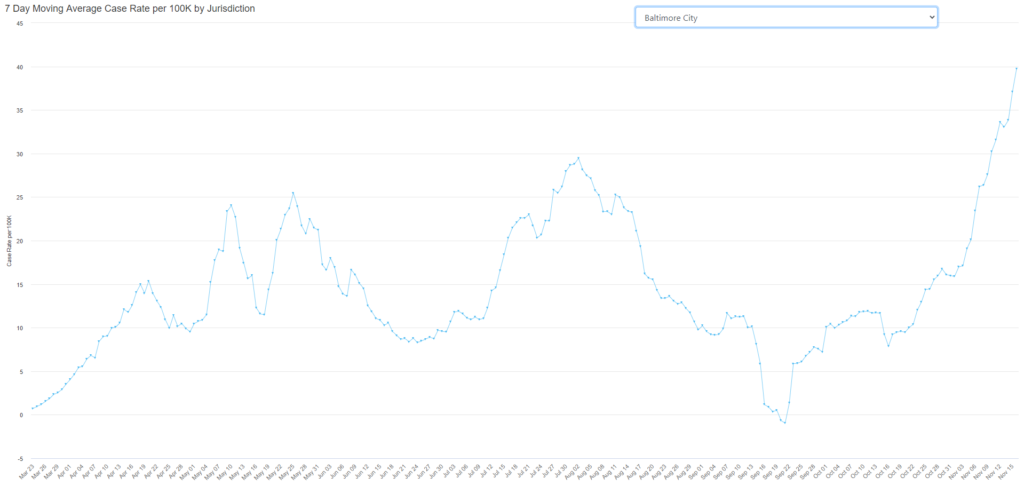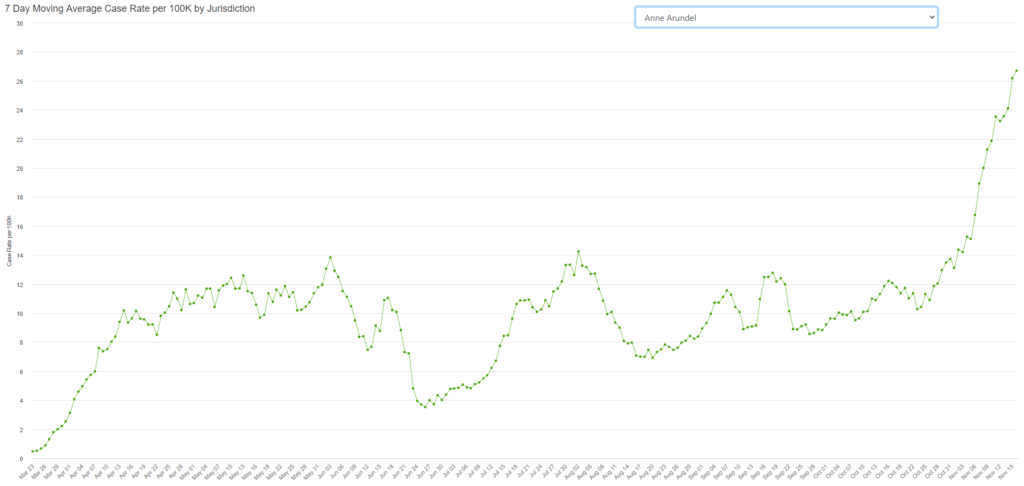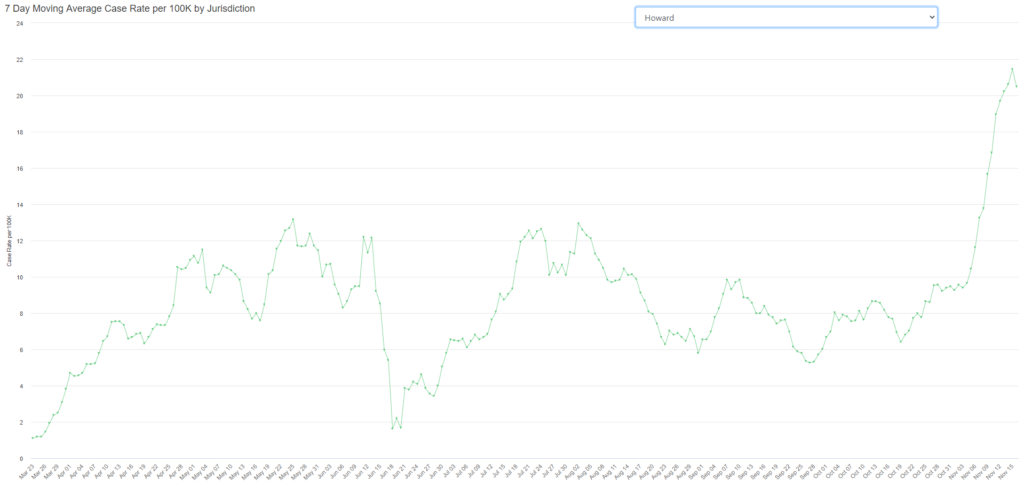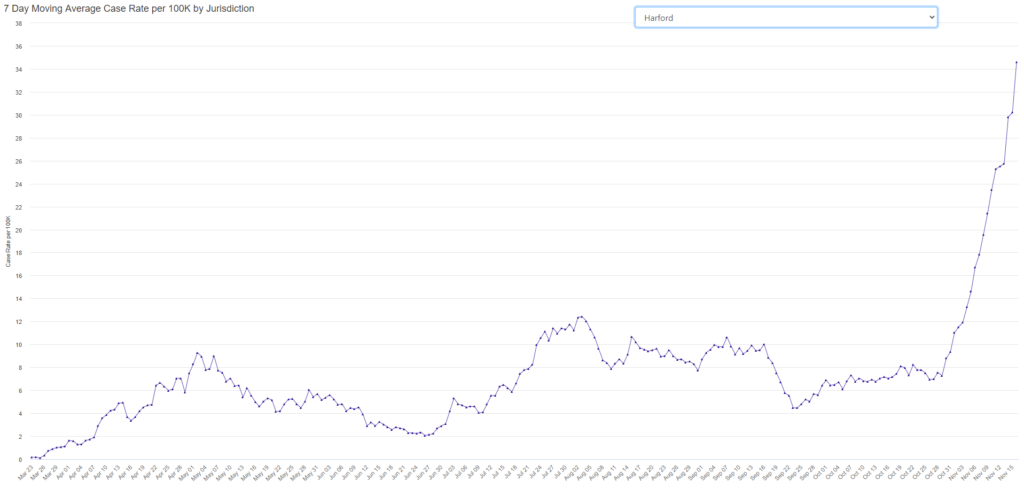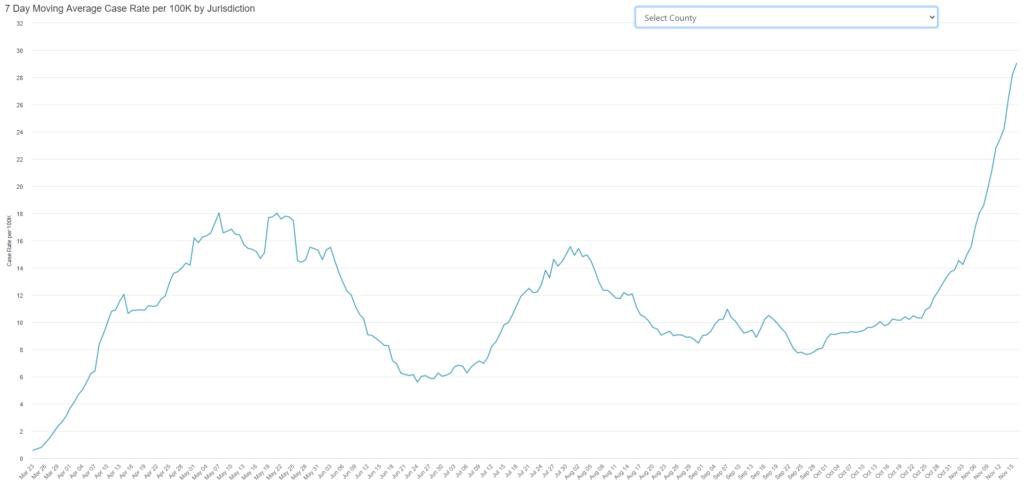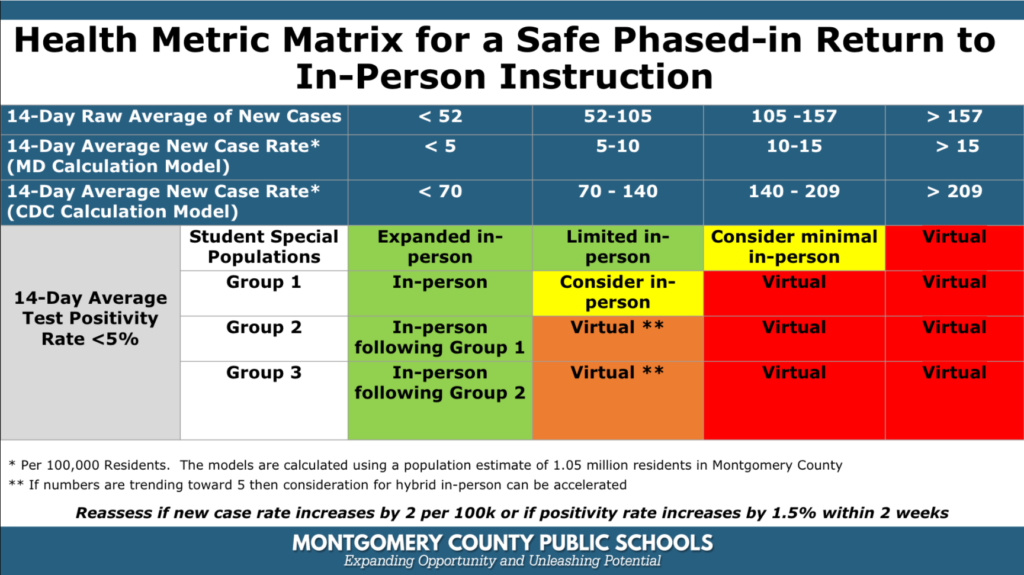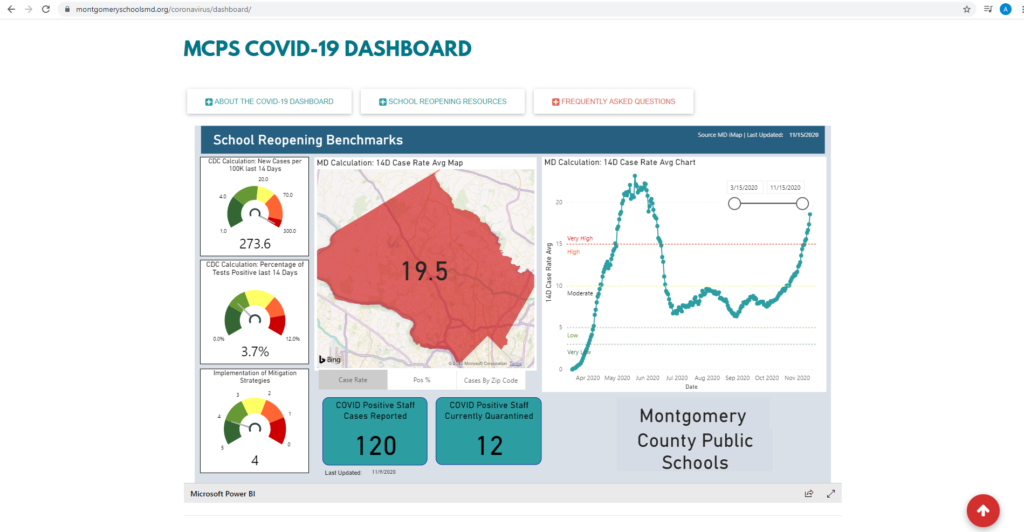By Adam Pagnucco.
In a letter written to the school board today, Montgomery County Education Association (MCEA) President Chris Lloyd called for a number of measures to ensure that any reopening of schools would be as safe as possible. Among those measures are the installation of effective air handling systems in every classroom, a health and safety committee at every school, strict social distancing, personal protective equipment and a choice of work location for educators.
Lloyd’s letter is reprinted below.
*****
December 11, 2020
Sent Via Email
Office of the Board of Education
Montgomery County Public Schools
Carver Educational Services Center
850 Hungerford Drive, Room 123
Rockville, Maryland 20850
Dear President Wolff and Members of the Board of Education,
I write to you today on behalf of the Montgomery County Education Association in relation to the Tuesday, December 15, 2020 Board of Education meeting, and the discussion/action around the return to physical workspaces.
We affirm the value of in-person learning, in support of the needs of our young scholars and their academic and social-emotional well-being. We call upon you to demand that our state and county leaders make the required investments in physical workspaces and institute policies to curb the significant community spread of this virus.
All of us need to be advocating for policies and funding needed for the safe schools our communities deserve. There is a fierce urgency in this work, so that we can return to schools as soon as possible. It is incumbent on policy makers to prioritize public education and the safety of adults and children in our care, not through proclamation, but through investment and policies.
We want to return to school safely and soon, and we can do this by stopping the rampant community spread, and by simultaneously providing proper health and safety protocols at the worksite. Acting immediately on these two items will allow our schools to thrive.
We have the knowledge and understanding of how to stop community spread. We’ve seen countries such as Australia institute polices that not only bent the curve of transmission but caused a precipitous and effective drop in cases and deaths, which allowed for safety in a community and its schools. Stopping the rampant community spread in our community is a matter of public policy and will, and it can be done if we decide to do so.
We have the knowledge, understanding and the resources to make workplaces safe. The Silver Diner in Rockville safely uses UV light in its air handling to eradicate the virus, and transmission there is significantly lower than average. Other worksites such as grocery stores have installed plexiglass barriers, used face masks and face shields, while simultaneously and significantly increasing the air exchange rate and air filtration in their buildings, aggressively moving air up and out of the building. These are examples of ways critical and essential businesses are seeking to eradicate the virus in their buildings. For one of the wealthiest counties in the nation, with $184 million in CARES Act funding, there is an obligation to act in this way in our public buildings.
We believe schools are essential, and therefore deserve essential funding to make the buildings and the inhabitants safe. Instituting a paycheck protection program for county businesses will allow us to stop the spread, and to open up the most important buildings for our children – our schools. By prioritizing schools and protecting our most vulnerable workers, we can both control the virus, keep our economy strong, and invite students back into buildings.
We call on the immediate funding and installation of effective air handling systems in each classroom, that provide for necessary air transfer, filtration and virus eradication.
We call for a laser focus on instruction, that educators can teach either online or in buildings, so that we can meet the needs of young scholars in our care and focus our efforts either in-person or online.
We call for Health and Safety Committees at each school, to look after the physical and emotional security of our students.
We call for every inhabited space in our schools to have the safety we’ve come to know and expect, and just like other emergencies, for educators to have the ability to remove themselves and their students from life-threatening situations.
We call for strict social distancing measures and needed PPE so that we can protect our children, families and staff.
We call for the choice of work location for educators, either remote or in-person, so that we can meet the needs of our teachers, and all of the children in their care.
All of this is possible with action now, so that we can bend the pandemic curve and have our buildings safe for occupancy. It will require funding and policies that make clear the top priority of this community is its schools and other people’s children. Fierce urgency and moral courage demands nothing less.
We alone cannot make our schools safe. We alone cannot stop the rampant spread of the virus. But we can lead the efforts to make this happen. It took weeks, and not months, for other countries with strict policies to bring the spread of the virus under control. It took investment by a community to make workplaces safe. We should do the same, demand the same, and then return to school safely and soon after executing such policies and infrastructure investments.
Sincerely,
Christopher Lloyd, NBCT
President, MCEA

